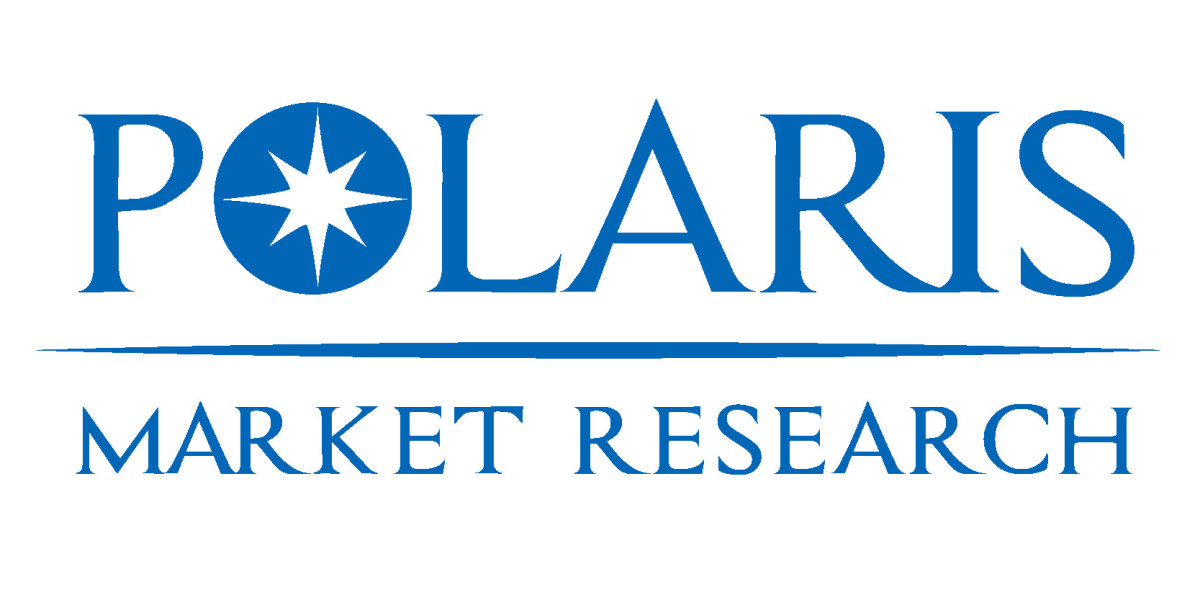The global Molecular Diagnostics Market was valued at USD 25.71 billion in 2024 and is projected to reach USD 38.01 billion by 2034, registering a CAGR of 4.0%. Rising prevalence of infectious and chronic diseases, increasing demand for personalized medicine, and rapid technological advancements are propelling the market forward.
Industry Trends
Molecular diagnostics has emerged as a cornerstone of modern healthcare, enabling precise detection and monitoring of diseases. Key trends shaping the industry include:
- Point-of-Care Testing (POCT): Increasing adoption of portable diagnostic devices for rapid results at clinics, hospitals, and remote locations.
- Integration with Artificial Intelligence: AI-based algorithms analyze complex genomic and biomarker data to enhance diagnostic accuracy.
- Rise of Liquid Biopsy Techniques: Non-invasive tests for early detection of cancers and monitoring treatment responses.
- Focus on Personalized Medicine: Molecular diagnostics helps design patient-specific therapeutic strategies.
- Automation and High-Throughput Technologies: Reducing turnaround time and improving efficiency in diagnostic labs.
Technological Innovations
Technological advancements are a key driver of growth in the molecular diagnostics market. Leading technologies include:
- Polymerase Chain Reaction (PCR): Enables amplification of DNA and RNA sequences for accurate detection of pathogens and genetic mutations.
- Next-Generation Sequencing (NGS): High-throughput sequencing technologies for genomic profiling and disease risk analysis.
- Microarray Technology: Allows for gene expression profiling and identification of multiple biomarkers simultaneously.
- CRISPR-Based Diagnostics: Emerging as a rapid, precise, and affordable method for molecular testing.
- In Situ Hybridization (ISH): Detects specific DNA/RNA sequences in tissue samples for diagnostic purposes.
These technologies enhance the speed, sensitivity, and accuracy of disease detection, making molecular diagnostics an indispensable part of healthcare systems worldwide.
Applications and Use Cases
Molecular diagnostics is employed across multiple applications, impacting both clinical and research domains:
- Infectious Disease Detection
Rapid identification of viral, bacterial, and fungal infections is critical for public health. Molecular diagnostics allows early detection of diseases like HIV, hepatitis, COVID-19, and tuberculosis, reducing transmission and improving treatment outcomes.
- Oncology and Cancer Diagnostics
Genomic profiling using NGS and PCR enables early cancer detection, mutation analysis, and monitoring of treatment response. Liquid biopsies are increasingly used for non-invasive cancer screening.
- Genetic Testing
Molecular diagnostics identifies hereditary disorders, carrier status, and predisposition to diseases, enabling preventive healthcare and counseling.
- Cardiovascular & Metabolic Disorders
Detection of biomarkers for heart disease, diabetes, and metabolic syndrome supports early intervention and risk assessment.
- Research & Development
Academic and pharmaceutical research institutes use molecular diagnostics for drug discovery, biomarker validation, and clinical trials.
Competitive Landscape
The molecular diagnostics market is highly competitive, with a mix of established multinational corporations and innovative startups. Key players include:
- Roche Diagnostics
- Abbott Laboratories
- Thermo Fisher Scientific
- Qiagen N.V.
- Bio-Rad Laboratories
- Becton Dickinson and Company
- Illumina, Inc.
- Danaher Corporation
- F. Hoffmann-La Roche AG
- Hologic, Inc.
Strategies adopted by key players:
- Mergers & Acquisitions: Expanding product portfolios and geographic presence.
- Research & Development: Introduction of novel diagnostic assays and technologies.
- Collaborations & Partnerships: Joint ventures with hospitals, research institutes, and biotechnology companies.
- Geographic Expansion: Penetrating emerging markets in Asia-Pacific, Latin America, and Middle East & Africa.
Market Segmentation
The market can be segmented based on technology, application, end-user, and region:
Technology
- PCR
- NGS
- Microarray
- ISH
- CRISPR & Other Molecular Techniques
Application
- Infectious Disease Diagnostics
- Cancer Diagnostics
- Genetic Testing
- Cardiovascular & Metabolic Diagnostics
- Other Applications (Prenatal Testing, Neurological Disorders, Pharmacogenomics)
End-User
- Hospitals & Clinics
- Diagnostic Laboratories
- Point-of-Care Testing Centers
- Research & Academic Institutes
Regional Insights
North America
Dominates the market due to advanced healthcare infrastructure, high adoption of molecular technologies, and substantial R&D investments. The U.S. remains the largest contributor.
Europe
Growth driven by aging population, high prevalence of chronic diseases, and strong adoption of molecular diagnostics in Germany, France, and the U.K.
Asia-Pacific
Fastest-growing region due to rising healthcare expenditure, increasing disease prevalence, and expanding diagnostic facilities in China, India, and Japan.
Latin America
Market expansion supported by improved healthcare infrastructure and awareness about molecular testing in Brazil and Mexico.
Middle East & Africa
Growth fueled by government initiatives, modernization of diagnostic laboratories, and rising demand for early disease detection in GCC countries and South Africa.
Market Drivers
- Rising Disease Burden: Increasing prevalence of chronic and infectious diseases drives the need for accurate diagnostics.
- Technological Advancements: Innovations in PCR, NGS, and CRISPR-based diagnostics enhance efficiency and reliability.
- Demand for Personalized Medicine: Tailored therapies require precise genomic and biomarker analysis.
- Point-of-Care Testing Growth: Rapid, on-site testing solutions for hospitals and remote clinics.
- Government Initiatives: Policies supporting diagnostic infrastructure and public health monitoring.
Market Challenges
- High Cost of Diagnostic Tests: Advanced technologies remain expensive, limiting access in some regions.
- Skilled Workforce Shortage: Requires trained personnel for sample analysis and interpretation.
- Regulatory Hurdles: Approval processes for molecular diagnostic assays are stringent.
- Data Privacy Issues: Handling sensitive genomic data necessitates robust security frameworks.
- Sample Quality Concerns: Poor-quality specimens can lead to inaccurate results.
Opportunities
- Emerging Markets Expansion: Growth in Asia-Pacific, Latin America, and MEA due to rising healthcare infrastructure.
- Integration with AI & Big Data: Enhanced data analytics for predictive diagnostics and clinical decision-making.
- Portable & Rapid Diagnostic Devices: Increasing adoption in point-of-care and emergency settings.
- Collaborations and Strategic Alliances: Pharmaceutical and biotech partnerships to develop innovative assays.
- Focus on Infectious Disease Preparedness: Lessons from COVID-19 highlight the importance of rapid molecular testing.
Future Outlook
The molecular diagnostics industry is expected to witness robust growth through 2034, driven by technological innovation, increasing prevalence of chronic and infectious diseases, and growing adoption of personalized medicine. Emerging trends include:
- AI and Machine Learning Integration: Enhanced predictive analytics and decision support.
- Portable Testing Solutions: On-site molecular diagnostics for rapid disease detection.
- Non-Invasive Testing Methods: Liquid biopsies for cancer and prenatal testing.
- Expansion in Emerging Economies: Rising adoption of advanced diagnostic technologies in Asia-Pacific, Latin America, and MEA.
- Preventive Healthcare Focus: Early detection to reduce disease burden and improve patient outcomes.
By 2034, molecular diagnostics will be a cornerstone of precision medicine, preventive healthcare, and early disease detection, enabling faster, more accurate, and cost-effective diagnostics globally.
Conclusion
The global molecular diagnostics industry is poised for sustained growth due to advancements in PCR, NGS, CRISPR, and point-of-care technologies. Rising demand for early disease detection, personalized therapies, and rapid diagnostic solutions will continue to propel adoption across healthcare facilities, laboratories, and research institutes.
For further details, refer to the official molecular diagnostics report.
More Trending Latest Reports By Polaris Market Research:
Catalyst Market: A Chemical Substance Used for Various Industrialized Processes
Extracorporeal Membrane Oxygenation Machine Market
Subdermal Contraceptive Implants Market
Extracorporeal Membrane Oxygenation Machine Market
Agriculture And Farm Equipment Market
Elevator Control System Market: Technologically Advanced Lifts for Maximum Regulation and Approach
Aluminum Foil Packaging Market
Orthopedic Surgical Robots Market







